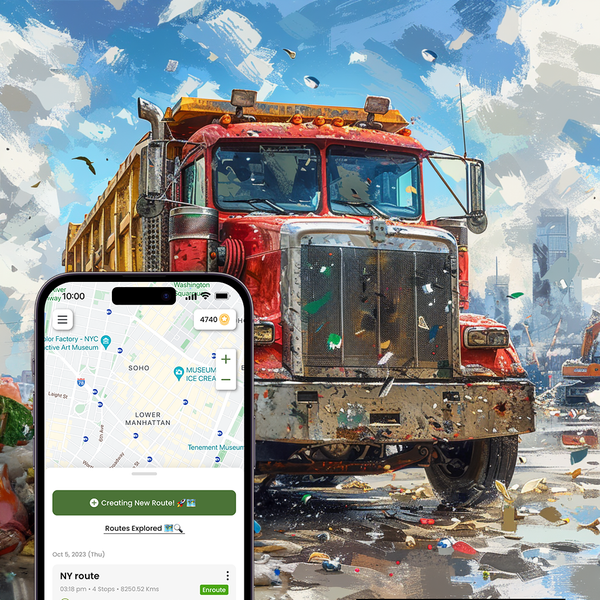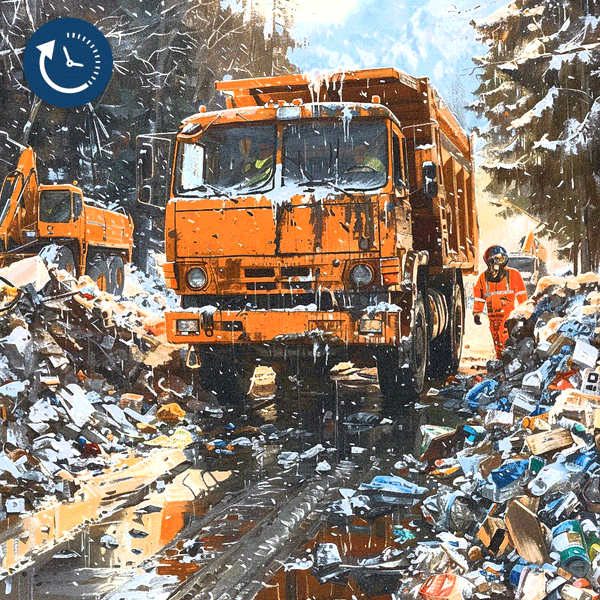Customers are at the forefront in today's highly competitive business landscape.
In this era of ever-increasing consumer expectations, maintaining customer retention and loyalty are the key factors to consider for the success of any business.
As per the reports, 81% of the customers are willing to pay more if given better customer service. On the contrary, 95% of customers who had a bad experience with a company will tell others about the same.
Effective waste management is not just about collecting & disposing of waste; it's about ensuring customer satisfaction throughout the process. From timely pickups to transparent communication, every aspect matters.
Let’s see how an efficient route optimization software like DynoRoute, can revolutionize waste management practices which ultimately lead to enhanced customer satisfaction.
Common Problems Faced by Customers Due to Poor Waste Management
Here are the 7 common concerns that customer faces in the absence of efficient route optimization software which ultimately results in customer dissatisfaction:
- Unwanted delays in services, irregular pickup schedules, and missed garbage collection lead to frustration, inconvenience, and hygiene concerns among the customers.
- Because of inappropriate communication channels, customers felt distrust and dissatisfaction. They might not be aware of any changes in the pricing structure, or unaware of the billing methods. All these in total leads to a decline in customer satisfaction.
- The existence of unsustainable waste management practices, the rising concerns about the environmental impact of waste disposal methods, the need for recycling options, and unclear information about sustainability efforts.
- Inflexible schedules, lack of customization options for waste types or disposal needs, and limited disposal locations restrict customer preferences.
- Unresponsive customer support, slow complaint resolution times, and unhelpful interactions with service representatives leave a negative impression.
- Improper waste handling, and unattended and overflowing bins due to missed pickups or delays create anxiety and safety concerns.
- The lack of online tracking, automated notifications, or digital account management options makes managing waste services inconvenient and outdated.
How to Improve Customer Satisfaction Using Route Optimization Software?
Now that the challenges are identified, let’s find their relevant solutions. One effective approach to conquer all the concerns is an integration of route planning and optimization software.
Leverage route planning software in your waste management business, and find 6 simple ways to improve customer satisfaction:
1. Eliminate missed pickups:
Optimize your waste collection routes considering distance, time, and pickup constraints. Real-time tracking and analytics enable your team to proactively address any potential issues, ensuring a more reliable and consistent service. Dedicated time windows can also be allotted to each stop so that pickups align with customer preferences and the chances of waste collection pickups are minimized.
2. Shorten wait times between pickups:
Efficient route optimization can significantly reduce the wait time between pickups. Routes are planned and optimized considering real-time traffic conditions, roadblocks, accidents, weather conditions, vehicle capacity, or any other variables. If any of these issues are identified, the software dynamically suggests another route, potentially reducing the overall wait time for customers.
3. Analyzing historical data through detailed reports:
Detailed or summary reports generated by the route optimization software showcase historical data, allowing waste management companies to identify trends and areas for improvement. Informed decision-making based on comprehensive data ensures continuous enhancements to service quality.
For instance, by going through the historical reports, the waste management company observed that there's a consistent spike in waste generation within a specific residential area during holiday seasons. Armed with this insight, the company strategically adjusts its routes and staffing during these festive periods.
4. Automated notifications and alerts:
Timely and proactive communication is a key element of customer satisfaction. Automated notifications and alerts keep customers informed about upcoming pickups, service changes, or any potential disruptions during the route. This real-time communication fosters transparency and builds trust between waste management providers and their customers.
5. Tailoring routes based on customer schedules:
Route planning software like DynoRoute, allows for the customization of routes based on customer schedules and preferences. Customers can specify special instructions or delivery preferences resulting in a more personalized experience. Customers can even set the priorities of the pickup. Whether it’s medium, high, or low.
6. Real-time tracking and live updates:
Real-time tracking capabilities provide customers with up-to-date information on the status of their waste collection services. They stay informed which ultimately empowers customers to plan their schedules accordingly, knowing precisely when to expect waste pickups, and if there are any disruptions or amendments in schedules.
Frequently Asked Questions
How to prevent missed pickups by integrating route optimization software?
Comprehensive route planning after analyzing potential issues in between the routes, and past data analyses minimizes the risk of oversight and missed collections. Also, the live real-time tracking and updates help waste management teams to proactively address any unforeseen challenges.
Can route optimization software accommodate different customer schedules?
Yes, based on time windows allotted to each stop, route planning software allows for the customization of routes based on customer schedules, offering flexibility in pickup times and avoiding pickup failures.
How does automated notification benefit customers?
Automated notifications and alerts along with live ETAs keep customers informed about upcoming pickups, service changes, or disruptions, promoting transparency and proactive communication.
Is route optimization software suitable for small-scale waste management businesses?
Absolutely. Route optimization software can be tailored to businesses of various sizes, offering scalability and adaptability to meet specific needs.
How does route optimization software contribute to sustainability efforts?
Determining the shortest route either based on distance or time contributes to minimal fuel consumption and a reduction in environmental impact.
Conclusion
So, be it unhappy customers or unwanted delays in completing pickups, adapting to the right route optimization software is all you need. The integration of advanced route planning tools not only addresses existing challenges in waste management but also positions your business for sustained growth and heightened customer satisfaction.
Leveraging advanced features like real-time tracking, dynamic route adjustments, and insightful historical data analysis, waste management companies can ensure a reliable, efficient, and customer-centric service.








